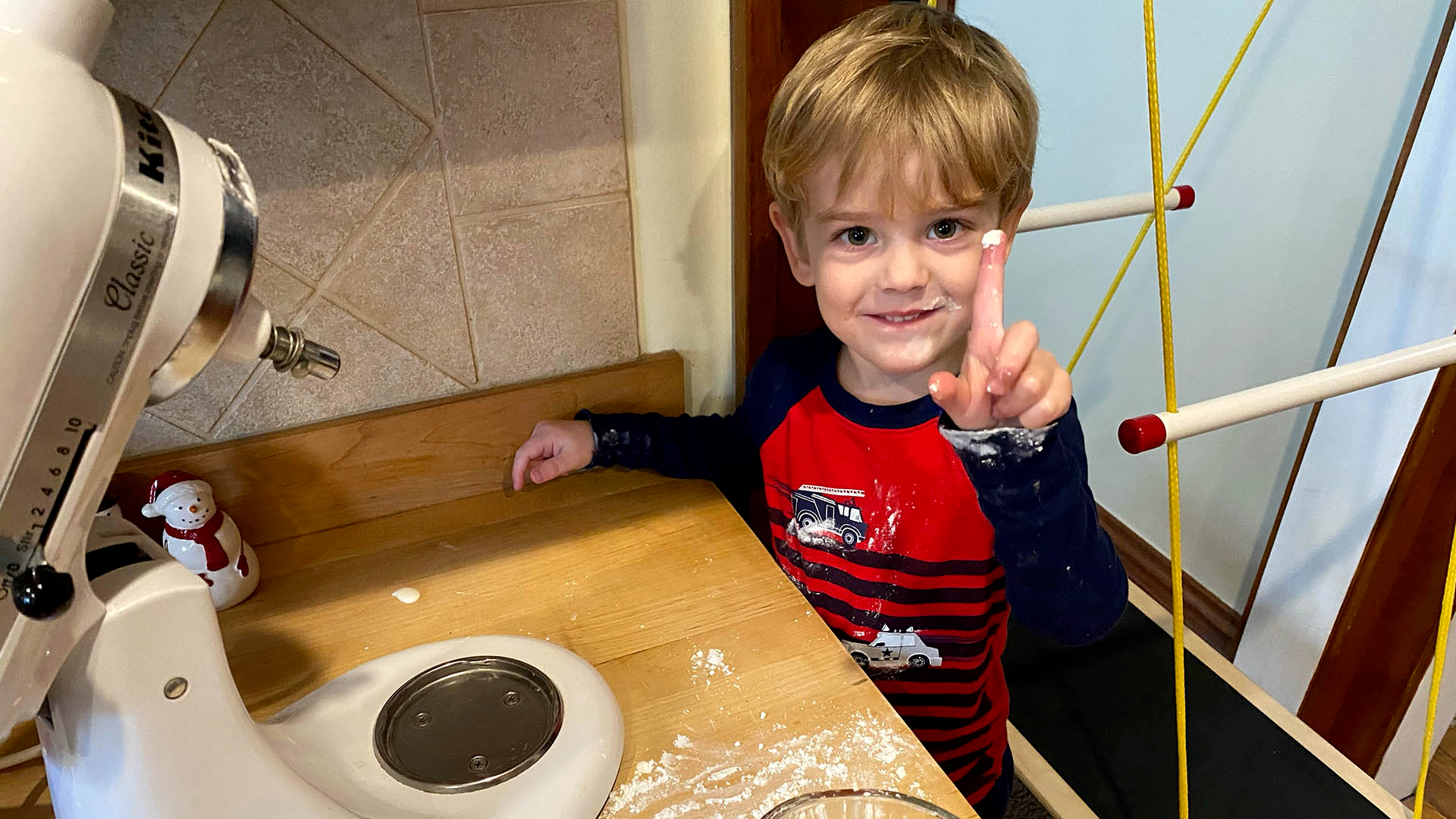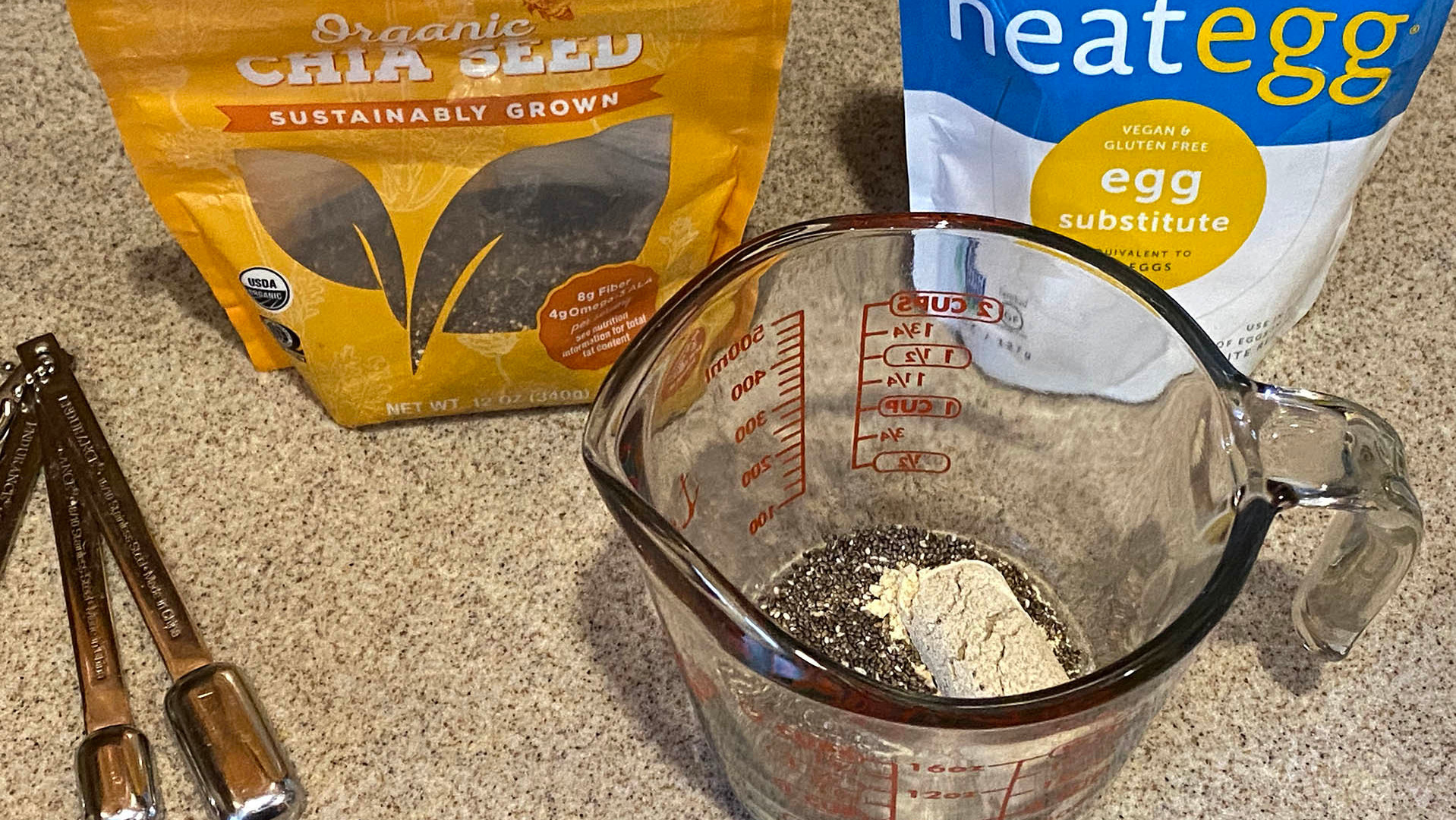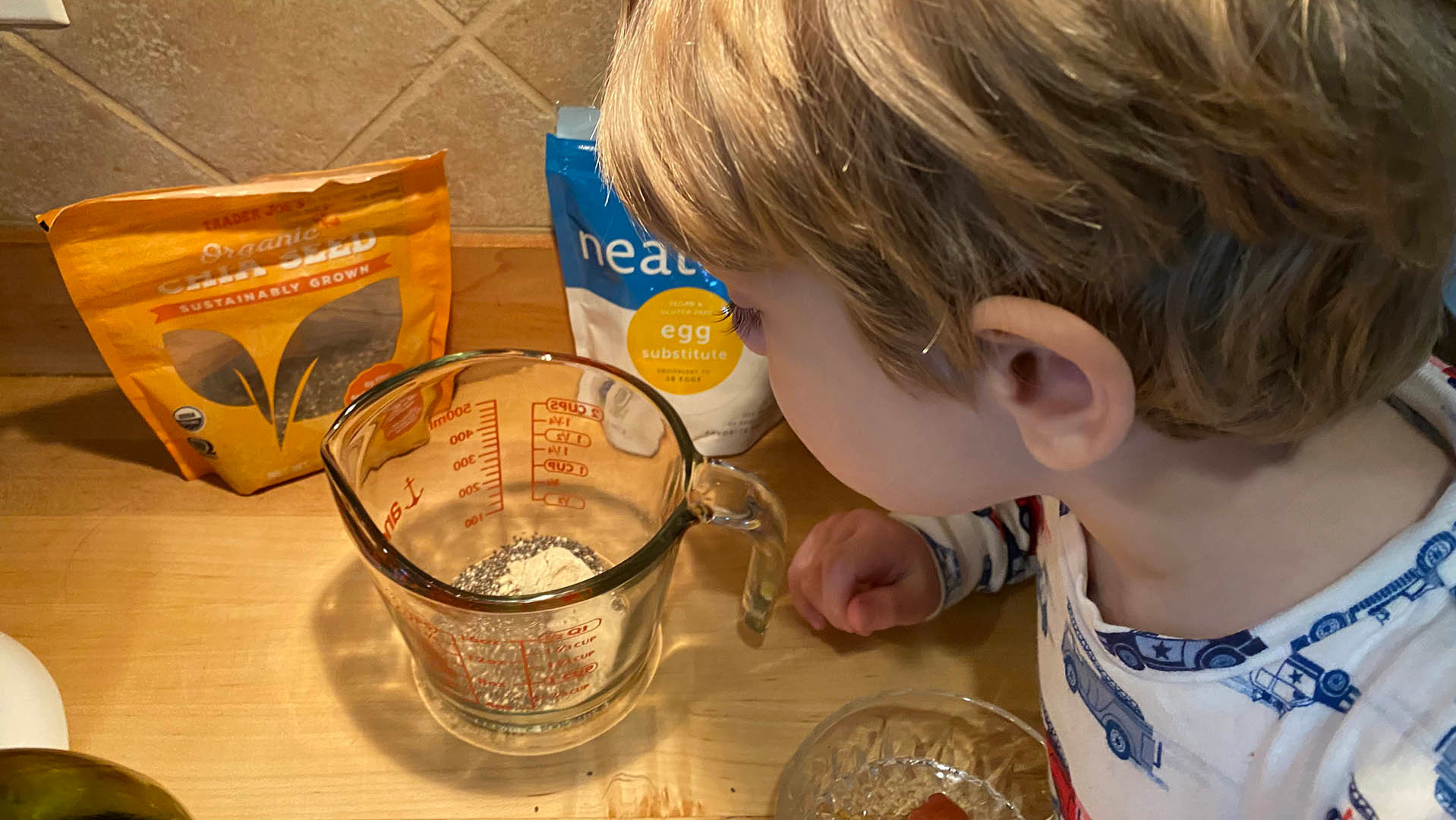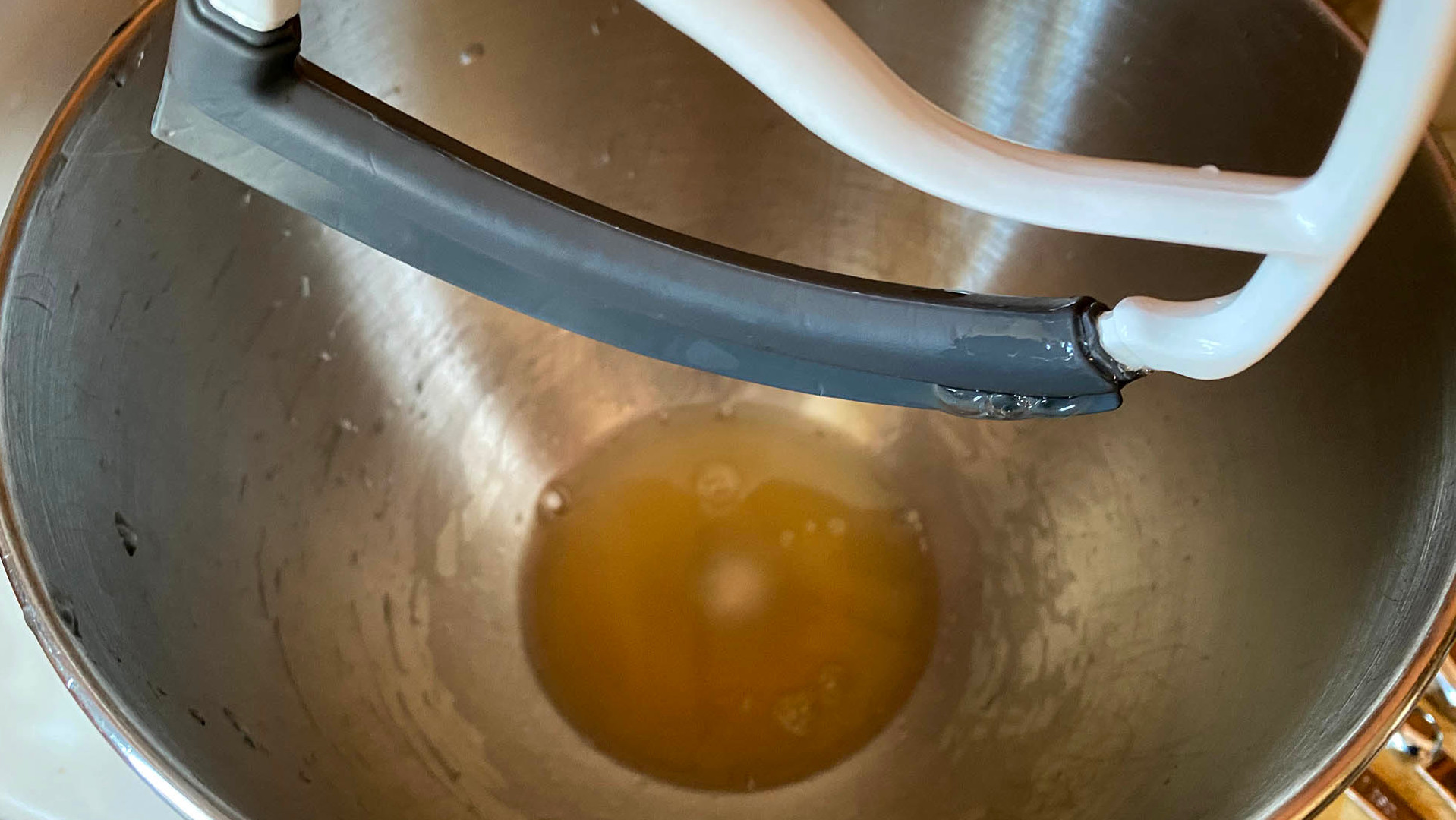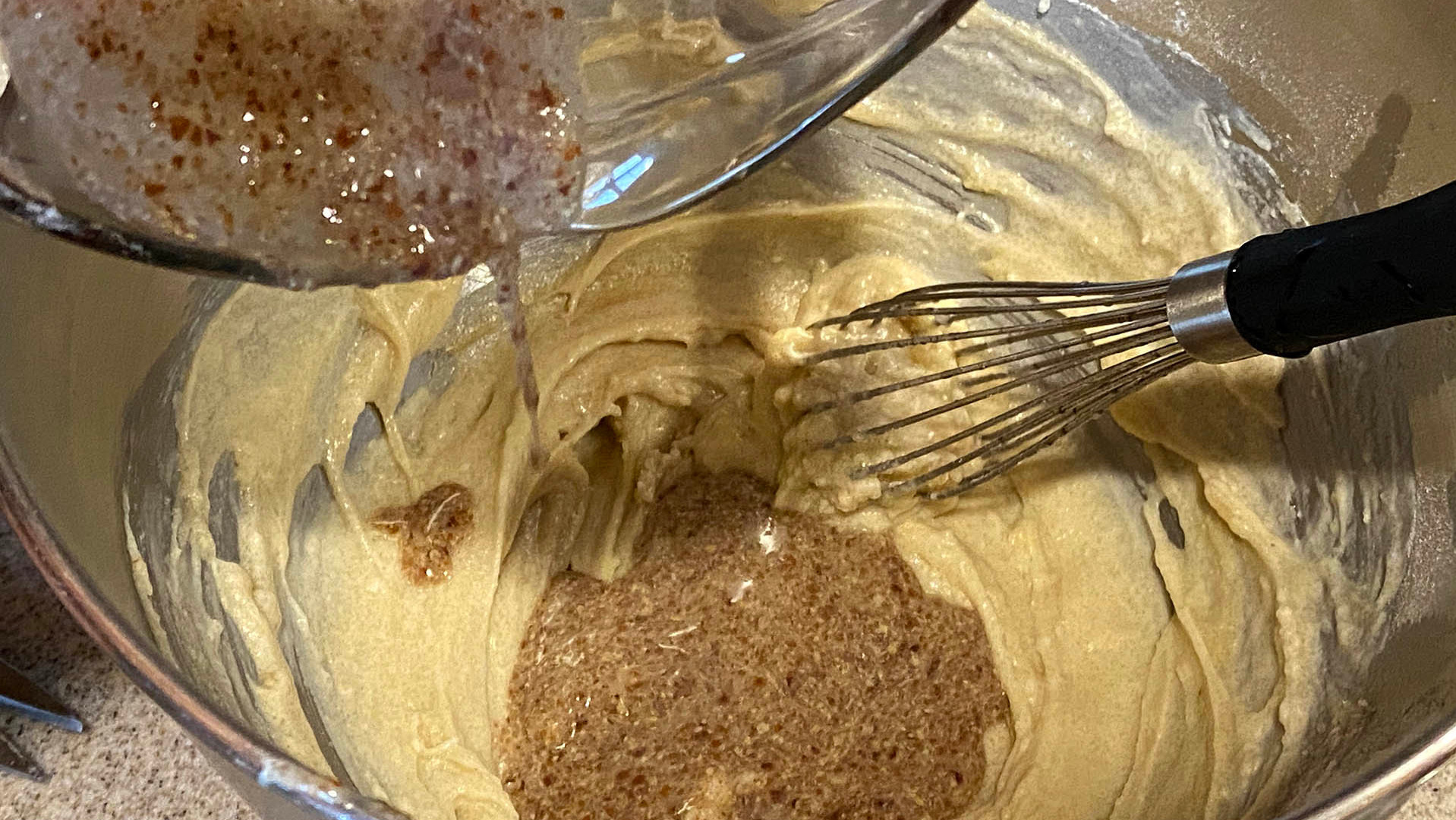How To Make Dairy- And Gluten-Free Baked Goods That Don't Taste Like Crap
Adventures in allergy-friendly baking with children.
We may receive a commission on purchases made from links.
I love baking. I grew up in a household where my mother was constantly making loaves of homemade raisin bread, pumpkin muffins, and decadent pancakes from my great-grandfather's recipe (it still has a cult following among our friends and family).
For most of my adult life, I've carried on those traditions. Unfortunately, my son, who is now a preschooler, has a lot of food allergies and sensitivities. The litany of problems includes dairy, gluten, quinoa (which is in a ton of gluten-free items), eggs, oats that aren't organic and certified-gluten free, peanuts, some tree nuts, and other random things like mangoes, which are apparently the poison ivy of fruit because they contain urushiol, the oily sap also found in poison sumac, oak, and ivy.
During the pandemic, my son's allergies have become more problematic as many of his less-than-popular food options have vanished from grocery shelves. At the same time, products that didn't previously bother him are now causing rashes. It's the fallout of the FDA's relaxed food labeling guidelines that allow food manufacturers the "flexibility" during COVID-19 to make "minor" ingredient changes without updating their labels.
As a result, cooking and especially baking have lately become much less fun. But I don't want my son living off just rice cakes, fruits, and vegetables. Over the past year, I've waded into the world of gluten-free vegan baking in the hopes of making him food that actually tastes good and won't give him a reaction.
After months of attempts, I've had some success making gluten-free vegan baked goods that don't taste like crap. It's important to remember that vegan gluten-free foods will never taste exactly the same as buttery-rich baked goods. The depth just isn't there. But they can be light and still taste delicious. Here's what I've learned from my own experiments and from talking with other bakers.
Don’t confuse dairy-free with vegan, or why I don’t just use applesauce
Baking is all about testing theories. "That's why I love it," says Ali Graeme, owner of Sweet Ali's Gluten Free Bakery, which has two locations in the Chicago suburbs. "Cooking is more of an art and baking is more of a science."
I couldn't agree more. Precision and timing are key, especially when you're swapping out ingredients.
If a recipe calls for vegan butter and dairy-free milk, I use Earth Balance Soy Free Buttery Sticks and Unsweetened Original Ripple, a plant-based, soy-free, non-GMO refrigerated pea protein "milk," that has more protein in it than almond milk or another milk substitute. Don't confuse dairy-free baking with egg-free or vegan. Many dairy-free gluten-free items still have eggs in them, and there are vegan breads that aren't gluten free. (The FDA says that gluten-free items can still contain small amounts of gluten, less than 20 parts per million, while anything certified gluten-free has to have less than 10 ppm.)
Eggs are more of an issue. Traditionally, many people have replaced eggs with applesauce (one-third of a cup of applesauce per egg). It's low-fat and works well because it adds moisture to cakes, cookies, and muffins. But it isn't a good binder for everything, especially in items that use more eggs.
Why should you care? Because eggs and gluten are both proteins, binding agents that glue everything together. Not having gluten or an egg in a recipe is a double whammy. Many dairy-free, gluten-free things just fall apart, and that's why many baked goods are gluten-free or vegan but rarely both. Without one or the other, baking is a lot more difficult.
When a recipe calls for only one or two eggs, it's usually easy to get away with using an egg replacer. But if a recipe requires three or four eggs, it becomes problematic to use an egg swap, says Graeme, because it affects the flavor. So I've had to resort to other methods.
Chia seeds
These are my standard go-to egg replacement. I prefer Trader Joe's Organic Chia Seeds. They are organic, inexpensive, easy to use, and a great source of plant protein.
Start a chia egg by scooping a tablespoon of chia seeds into a coffee mug or a large measuring cup. Heat water in a tea kettle, so it's hot but not boiling. That's important because if you add boiling water, you will scald the heck out of your egg and it will smell burnt. Stir together to combine the water and chia seeds for 30 seconds to a minute. Let it sit for a couple of minutes, maybe stirring once or twice again, until it turns into a gelatinous speckled blob that you can plop into your recipe.
I frequently use chia eggs in gluten-free vegan cornbread. If you're going for the store-bought variety, I prefer the Simple Truth Organic Gluten Free Cornbread Baking Mix sold at Mariano's (which is owned by Kroger). The Minimalist Baker blog also has a good vegan gluten-free cornbread recipe.
The only drawback with making chia eggs: you will see the chia seeds in whatever you are baking. They appear as black dots, like poppy seeds in poppy seed bread. You can use a food processor to grind them up. I'm usually rushed on time and don't bother.
Neat Egg
My favorite egg replacer right now is Neat Egg. I like it because it's a quick and easy non-GMO egg replacer that's full of plant protein, and it's certified gluten-free.
Be prepared: it's the color of grayish-brown poop. (No, it doesn't smell like it.) That's because it's a mixture of garbanzo beans and chia eggs that has been pulverized into a powder. But it does look a little gross until you mix it in.
Unlike chia seeds, which are also great to use but are quite obvious in your baked goods unless you grind them up, Neat Egg is not detectable. It's like a smooth secret agent, which makes life easier when you have a little kid who points out every lump or bump.
To use Neat Egg, start by putting one tablespoon in a coffee mug and add two tablespoons of hot (not boiling) water. Stir together for about 30 to 60 seconds until it congeals into a gooey blob that resembles Jell-O.
Let it sit for a couple of minutes. Make sure all the powder has been incorporated so you won't have a powdery gross mess on your hands, and then add it to your baking mixture. If a recipe calls for two eggs, I'll typically mix one Neat Egg and one chia egg together for the perfect egg replacer.
I use Neat Egg a lot in my go-to banana bread recipe by Audrey Roberts, writer of the blog Mama Knows Gluten Free and The Everything Gluten-Free and Dairy-Free Cookbook.
Aquafaba
Need to make something light, fluffy and meringue-like? Aquafaba is a good way to do it. This is chickpea brine, the liquid drained from canned garbanzo beans (also called chickpeas). It might sound gross, but don't knock it until you've tried it.
Drain the liquid from a can of chickpeas and save the brine in a separate bowl. It will look like egg whites. Three tablespoons equal one egg, two tablespoons equal one egg white. Cream of tartar can help stabilize it. (A ratio of ¼ cup of brine to ¼-½ teaspoon of cream of tartar usually works.) Beat the tartar and brine like crazy with a whisk or mixer until it becomes frothy like meringue. This will take anywhere from one to five minutes, depending on which tool you're using. Add to your recipe.
Try using aquafaba with this gluten-free vegan chocolate cake recipe by Sarah Nevins of A Saucy Kitchen. Aquafaba can also be used to make macarons or in frosting.
Baking powder
Want fluffy pancakes? Use baking powder (not baking soda) as an egg replacer to make them puff up. Use 1½ tablespoons baking powder to replace one egg. Make sure to let the batter rise for five minutes or it won't blend right.
It's also important to note that certain mixtures like Bob's Red Mill Paleo Pancake Mix (which is gluten-free) taste great if you use a real egg, but taste flat and look gray if you use a substitute. Try this vegan, gluten-free pancake or waffle recipe by Kelly Roenicke of The Pretty Bee. My favorite gluten-free, dairy-free pancake mix by Pamela's Products was, unfortunately, one of the things that stopped being made during the pandemic.
Flaxseed
Graeme likes using flax eggs in her chocolate chip cookies and brownies because, she says, "it's easy to get a hold of," and can be bought in bulk. They're also easy to make.
As with making a chia egg or Neat Egg, measure out the ground flaxseed one tablespoon at a time into a cup or mug. Add hot—not boiling—water, stir it, and let it "plump up"; this should take less than five minutes. (I usually use one tablespoon of flaxseed to three tablespoons of hot water to replace an egg.) It will look like a big blob of goo. Some people use cold water and put the mixture in the refrigerator, but I don't recommend it, because it takes longer and doesn't gel as well.
You can buy flaxseed meal (which is already pre-ground) or whole flaxseeds and grind them yourself (I prefer the latter because I can buy organic and certified gluten-free). Freeze whatever you don't use immediately or it will go rancid pretty quickly. It will keep for a few months in the freezer.
Flaxseed—which comes in brown or golden varieties—still has some plant protein, about 1.9 grams of protein per tablespoon. This is far less than the 4.7 grams per tablespoon in chia seeds, according to the USDA. It still has lots of fiber and omega-3 fatty acids, though. It's also low carb, if you're following a keto diet.
"I like [ground] flaxseed because it gels up like an egg and has a similar consistency," says Avra Epstein, a Toronto-based contracts lawyer and Instagram influencer who blogs about her vegan lifestyle at Love Wild Live Free. "It always works well and you can't tell the difference in a recipe."
Epstein still uses applesauce in some of her vegan recipes. But for something like potato pancakes, "you need something that's going to bind things together," she says. What's why she uses flaxseed as an egg replacer in her baked (not fried) potato latke pancakes recipe.
Other egg swaps
There are lots of other creative egg replacers. In pancakes, Graeme will replace eggs with bananas, one ripe mashed banana per egg. Similarly, for flourless and fudgy brownies, swap each egg with a quarter cup of avocado. This also works in vegan avocado brioche.
For vegan bread or pizza dough, try psyllium husk, a dietary plant fiber. It's a milled seed husk of psyllium seeds that grow on a plant sometimes called desert plantain or desert Indian wheat. (Fiber-rich laxatives such as Metamucil and Fiberall also contain psyllium husk powder, so don't overdo it too much.) Mix psyllium husk powder with water and it will gel instantly, so be prepared with a whisk. Try this low-carb psyllium flatbread recipe, this pizza dough, or this vegan bread recipe.
When you're starting out, try using just one egg replacer at a time, especially if you're baking for someone with food allergies or sensitivities. When baking anything that is gluten-free and vegan, it's best to let the recipe rest a couple of minutes between steps to allow all the ingredients to meld.
If you get frustrated, remember: making gluten-free, vegan baked goods gets easier with time and practice. And if you mess up, you can always eat the cookie batter without worrying about getting sick.
